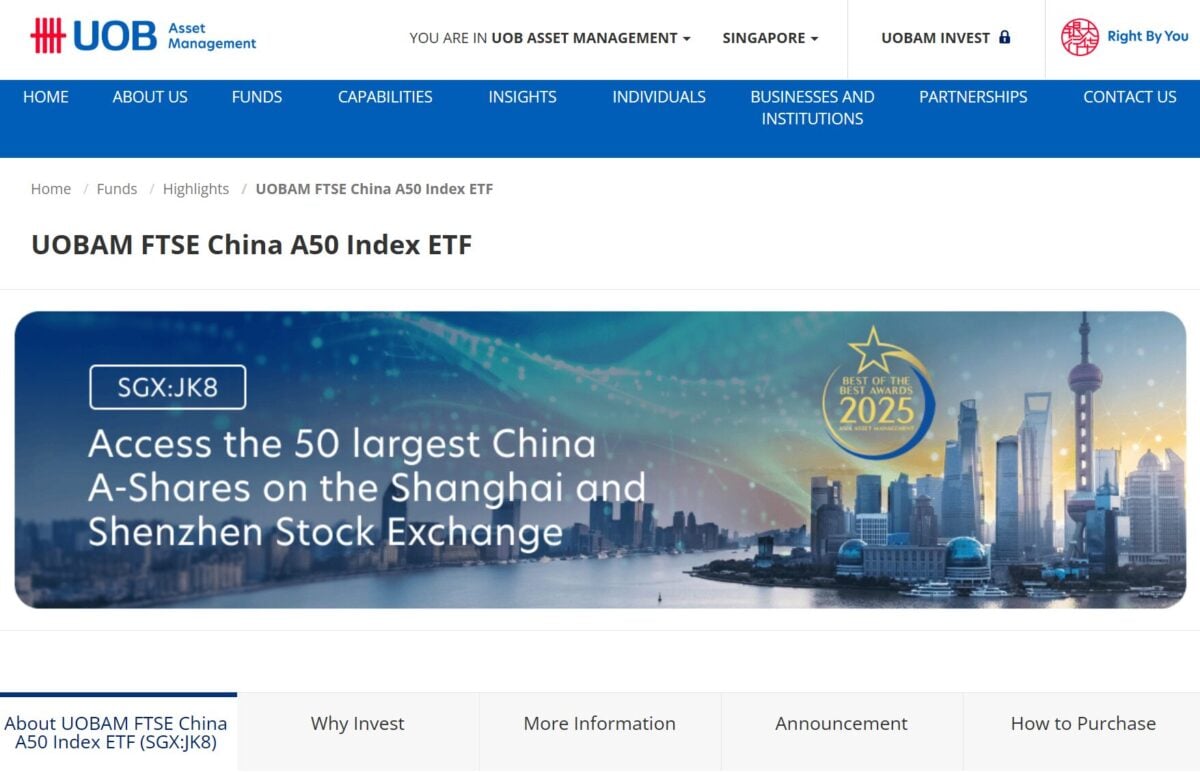
A few years ago, at the height of the pandemic, the FIRE movement—short for Financial Independence, Retire Early—captured global attention.
With nowhere to go and more time to reflect, many people began rethinking their financial futures. Some started investing and, riding a booming stock market, watched their portfolios grow rapidly. Others, especially in the U.S., took advantage of remote work to relocate to lower-cost cities while keeping high-paying jobs. Some even stacked side hustles on top of their day jobs—boosting their income while lowering expenses.
In Singapore, FIRE also gained traction. But instead of aiming to stop working entirely, many began exploring alternative versions of FIRE. Terms like Barista FIRE, where your investments cover your basic needs so you can work in a job you actually enjoy, started to emerge. There’s also FatFIRE (retiring early with a luxurious lifestyle) and LeanFIRE (retiring with minimal expenses). You can read more about the different types of FIRE here.
Still, achieving FIRE—regardless of which version—in Singapore comes with its own unique set of challenges. Reaching it might be harder for the average Singaporean than in many other parts of the world.
Singapore’s Policies Are Designed to Encourage Work, Not Early Retirement
Unlike some countries where early retirement may be more viable due to broader social safety nets, Singapore’s policies are generally structured to encourage continued employment among adults.
For instance, while Singapore does offer limited unemployment support through the SkillsFuture Jobseeker Support Scheme, the payout, up to $6,000 over six months, is only available to individuals who actively participate in job search activities. The goal is to help individuals return to the workforce, not to sustain a long-term break from it.
Working mothers in households earning $12,000 and below also receive additional childcare subsidies—support that non-working mothers do not enjoy. Similarly, lower-income young families can receive financial top-ups through the ComLink+ Progress Package, but one key eligibility criterion is active employment.
To be clear, these policies are not flawed. Instead, they are designed to promote economic participation and social mobility—key pillars of Singapore’s long-term strategy. However, our point is that they reflect a system prioritising work over retiring early. Even our national retirement scheme, CPF LIFE, is built on the principle of each person contributing to their own retirement nest egg, rather than everyone getting the same payout.
The Tension Between Homeownership and FIRE
With a homeownership rate of around 90%, owning a home is deeply ingrained in the Singaporean psyche. But when it comes to FIRE, this aspiration can complicate things.
The reality is that buying a home almost always involves taking on a mortgage—a long-term financial commitment that runs counter to the debt-free lifestyle many in the FIRE community aim for. In other words, the desire to own property and the goal of achieving early financial independence are often at odds.
For those who are content living with their parents, the path to FIRE may be more straightforward. Without the burden of housing costs, building up your investment portfolio and cutting down on monthly expenses is much easier. This is particularly important in the earlier years, where investing a large portion of your savings means having more time to compound its return. But if owning your own place is non-negotiable, especially in a property market like Singapore where homes are not cheap, then the journey toward FIRE becomes significantly harder.
There’s Nowhere Cheaper To “Geoarbitrage” Within Singapore
One downside of living in a small and affluent country like Singapore is that the cost of living will naturally be high. This shouldn’t come as a surprise.
As Singaporeans become wealthier, there’s a growing demand for a higher standard of living. That translates into increased consumption of better-quality goods and services, which in turn drives up wages—and, inevitably, prices. We see this pattern in other major cities like New York, London, and Tokyo, where the cost of living is high simply because people can afford to pay more.
The key difference? In larger countries, people often have the option to “geoarbitrage”—a strategy where you work in an expensive city but retire in a cheaper part of the same country. For example, someone who works in New York might eventually move to a small town in the U.S. with a much lower cost of living.
In Singapore, that option doesn’t exist. We don’t have a “cheaper” part of the country to retire to. For the average Singaporean pursuing FIRE, this means having to plan for retirement in a high-cost city, because there’s really no way to escape it without moving overseas.
Read Also: Remote Working: Should You Arbitrage Between Where You Work & Where You Live
Despite the challenges we’ve covered, pursuing FIRE in Singapore isn’t a lost cause. In fact, one of the biggest advantages Singaporeans have is the relatively high income levels.
As of 2023, the median monthly salary in Singapore (excluding CPF) is $4,550. To put that into context, the Full Retirement Sum (FRS) of $213,000, set aside at age 55, will provide a monthly lifelong payout of about $1,730 via CPF LIFE. This is the amount the government has determined is required for a basic retirement in Singapore.
Now let’s do some simple math.
If a worker takes home around 80% of their median salary (roughly $3,640 per month), that’s more than double the CPF LIFE payout amount. So, theoretically, if someone starts earning the median salary from age 25, never gets a raise, and saves 50% of their take-home income consistently until age 45, they could stop working at 45 and live off those savings for 20 years until age 65—when CPF LIFE kicks in to provide lifelong payouts.
FIRE Is Achievable, But There Are Key Considerations
Of course, the scenario we described earlier is a simplified one, with many “ifs” in between. But the main takeaway is this: FIRE—or at least LeanFIRE—isn’t out of reach for many Singaporeans, if it’s something you’re truly committed to working towards.
That said, there are a few important considerations you can’t ignore:
A Fully-Paid Home Is Essential: Housing is one of the biggest cost components in Singapore. Whether you’re buying or renting, it’s expensive. If you want to FIRE in Singapore, having a fully-paid home is critical. It removes a major financial burden and gives you much more flexibility when planning your monthly expenses in retirement.
Children Change The Equation: CPF LIFE payouts are based on what an individual needs to retire, assuming they’re not supporting dependents. But if you’re planning to retire early and still have young children (or elderly parents) you need to support, your passive income needs to be higher. You’ll have to factor in everything from school fees to daily expenses until they become financially independent.
Healthcare Requirements: Singapore’s healthcare safety net includes MediShield Life and CareShield Life, which offer basic protection. But those planning for early retirement may need more comprehensive insurance to cover unexpected events like accidents or critical illnesses. A major health issue—whether for yourself or a loved one—can quickly derail even the most carefully planned FIRE strategy.
You Need Save & Invest: Simply saving your way to early retirement isn’t just difficult—it’s inefficient. To build up your FIRE portfolio effectively, you need to invest. Investing not only helps grow your wealth faster, but also allows your money to keep working for you, even as you begin drawing down on it during early retirement.
FIRE In Singapore Is Tough, But Not Impossible
This isn’t an exhaustive list, and there are certainly many other factors to consider if you’re serious about pursuing FIRE. However, the key point remains: while achieving FIRE in Singapore is undoubtedly challenging, it is possible if you plan well and learn how to navigate the various trade-offs along the way.
If you’re keen to dive deeper into what the FIRE journey can look like in a Singapore context, join us at InsureXpo by CIMBon 12 April 2025.
This year’s theme is Financial Independence, Retire Early (FIRE), and the event will cover a wide range of practical, Singapore-specific topics—from insurance, investing and CPF strategies to estate planning and property decisions. Whether you’re just starting out or already on your FIRE path, it’s a great opportunity to hear from experts and gain insights tailored to Singaporeans, including discussions on financial readiness, how government schemes like MediShield and CareShield stay relevant, and even how to work towards becoming a CPF millionaire.
Bonus for DollarsAndSense Readers
If you’d like to attend InsureXpo by CIMB, we’ve got something special for you. Use our exclusive promo code – DS100 – to redeem complimentary tickets to the event.
Register here to secure your spot.
The post How Realistic Is FIRE For the Average Singaporean? appeared first on DollarsAndSense.sg.











